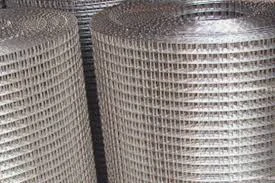Aug . 18, 2024 04:32 Back to list
Choosing the Right Roofing Nails with Washers for Your Home Project
The Importance of Roofing Nails with Washers in Construction
When it comes to constructing and maintaining a roof, choosing the right materials is crucial for ensuring durability and protection against the elements. Among these materials, roofing nails are an essential component, and the use of washers in conjunction with them can significantly enhance their effectiveness. In this article, we will explore the importance of roofing nails with washers, their benefits, and considerations for their use in roofing projects.
What are Roofing Nails with Washers?
Roofing nails are specialized fasteners designed specifically for use in roofing applications. They typically have a larger head than standard nails and are made from corrosion-resistant materials to withstand harsh weather conditions. Roofing nails with washers are equipped with a flat, circular disc made of rubber or metal that sits beneath the nail head. This washer acts as a sealant, providing an extra layer of protection against water infiltration.
Benefits of Using Roofing Nails with Washers
1. Enhanced Water Resistance One of the primary benefits of roofing nails with washers is their ability to create a watertight seal. When properly installed, the washer compresses against the roofing material, preventing water from seeping in around the nail. This is particularly important in areas susceptible to heavy rainfall or snow, where even a small leak can lead to significant water damage.
2. Improved Wind Resistance Roofing systems are often exposed to strong winds that can lift shingles and cause damage. Nails with washers offer greater holding power, thereby reducing the chances of shingles being dislodged during storms. This added stability helps extend the lifespan of the roofing materials and ensures the overall integrity of the roof.
3. Reduced Risk of Rust and Corrosion Roofing nails are often made from galvanized steel or stainless steel to minimize the risk of rust. The addition of a washer further protects the nail from moisture exposure. If the washer is made of a rubber compound, it can create a barrier that limits water contact with the nail, therefore prolonging its life and the effectiveness of the roofing system.
roofing nails with washers

4. Compatibility with Various Roofing Materials Roofing nails with washers can be used with a variety of roofing materials, including asphalt shingles, metal roofs, and even certain types of tiles. This versatility makes them a preferred choice for many roofing contractors, as they can streamline their inventory and ensure high-quality installation across different projects.
Considerations When Using Roofing Nails with Washers
While roofing nails with washers provide numerous advantages, there are several considerations to bear in mind during installation
1. Proper Installation For roofing nails with washers to be effective, proper installation is key. Nails should be driven straight into the roofing material without overdriving or underdriving. Overdriven nails can compromise the washer's seal, while underdriven nails may not provide adequate hold.
2. Choosing the Right Size It’s essential to select the right size of nails and washers for the particular roofing application. The diameter of the washer should be compatible with the diameter of the nail, and the length of the nail should be sufficient to penetrate through the roofing material into the underlying structure.
3. Maintenance Regular inspection of roofs installed with nails and washers is necessary. Over time, exposure to weather can degrade the materials, leading to a potential risk of leaks. Maintenance ensures the longevity and performance of the roofing system.
Conclusion
In conclusion, roofing nails with washers play a critical role in ensuring the durability and effectiveness of roofing systems. Their ability to create a watertight barrier, enhance wind resistance, and reduce corrosion makes them an invaluable asset in construction and roofing maintenance. By considering proper installation techniques and material selection, homeowners and contractors can significantly improve the performance of their roofs, securing their investment for years to come.
-
Weather Resistance Properties of Quality Roofing Nails
NewsAug.01,2025
-
How Galvanised Iron Mesh Resists Corrosion in Harsh Environments
NewsAug.01,2025
-
Creative Landscaping Uses for PVC Coated Wire Mesh Panels
NewsAug.01,2025
-
Common Wire Nail Dimensions and Their Specific Applications
NewsAug.01,2025
-
Choosing the Right Welded Wire Sheets for Agricultural Fencing
NewsAug.01,2025
-
Anti - Climbing Features of Razor Wire Barriers
NewsAug.01,2025









